“Bright Star” – Anatomy of Love [Review]
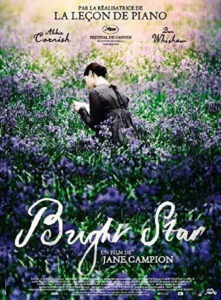
Title: “Bright Star”
Release Date: 2009
Director: Jane Campion
Cast: Abbie Cornish, Ben Whishaw, Paul Schneider, Kerry Fox, Edie Martin, Thomas Brodie-Sangster
Jane Campion’s film “Bright Star” impresses with its simplicity and power of message. Instead of a fast-paced plot, we have a romantic spin, with silence and the power of cinematic imagery taking the place of long-winded dialogues. “Bright Star” is an incredibly painterly and poetic work, which captures the universal magic of first love through its handling of light, color and poetic succinctness.
“Bright Star” is set in early 19th century England. Here is a young spinster, Fanny Brawne (played by Abbie Cornish) meets a budding penniless poet, John Keats (Ben Whishaw). The man accepts the invitation of Charles Brown (also a poet) and takes up residence in his house, next door to Fanny. The initially cool and ironic relationship between the two young people gradually transforms into a hot and romantic feeling. However, Keats’ poverty and his progressive tuberculosis stand in the way of their marital plans. Eventually, the poet, in order to save his health, decides to go to Italy, where he unexpectedly dies.
“Bright Star” – herstory
This seemingly simple plot of the movie “Bright Star” abounds in many intriguing levels of meaning. It is noteworthy that the entire story is told from the point of view of the female protagonist, who is at the center of the film’s events. The viewer looks at Keats through Fanny’s eyes, but does not have access to any of the poet’s intimate thoughts or situations from his private life. The female perspective is emphasized in Campion’s work by a specific method of film shots. It involves constantly emphasizing the fact that it is a woman who is looking at a man – Keats – often through a window or through an open or ajar door. This means of expression, which is also characteristic of the director’s earlier films, clearly differs from the classical film tradition, in which it is the woman who is the object of male observation.
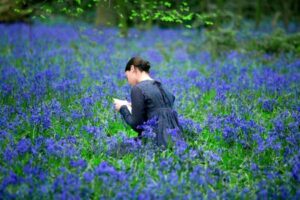
Moreover, the main leitmotiv of the film introduced as early as the opening scene of the work – the sight of Fanny sewing – acquires special meanings. Sewing at the narrative level is a metaphor taken from feminist discourse. It refers to the myth of Arachne – a Greek princess who surpassed even Athena herself in the art of embroidery. The goddess, out of anger, turned the girl into a spider. In feminist criticism, the activity of weaving is a metaphor for women’s literary creativity. A story is a fabric – a work constructed by a woman in the private sphere and created from intimate experiences (as opposed to the public male space). The female narrative is also like a spider’s web – full of various intertwining threads.
The film’s focus on the female character is also underscored by Jane Campion’s numerous references to the classics of European painting, in which we find the study of the female figure. We certainly have here a reference to the work of Romantic painter Caspar David Friedrich, evident in the various shots of Fanny with her back turned to the viewer (such as the painting Woman at the Window). The scene in which the heroine reads John’s love confession brings to mind Jan Vermeer’s work “Woman Reading a Letter”. In turn, the film’s opening shot brings to mind Jean Francois Millet’s “Woman Sewing by Candlelight”. In “Bright Star”, His-story is thus transformed into Her-story – that is, a story told by a woman and about a woman.
“Bright Star” – thoughtful and romantic
This reevaluation of gender roles, and thus the feminist perspective of “Bright Star”, characterizes the entire film. It seems that “Bright Star’s” composition is even based on a specific tension between femininity and masculinity, with a reversal of their standard perception. For the man (Keats) belongs to such qualities as romanticism, exaltation and sensitivity. Meanwhile, the woman (Fanny) is pragmatic, hard-headed and not at all fond of poetry. Particularly significant seems to be the attitude of both of them to finances: Fanny prides herself on making money from her sewing of costumes and contrasts her own lucrative occupation with “unproductive” poetry writing.
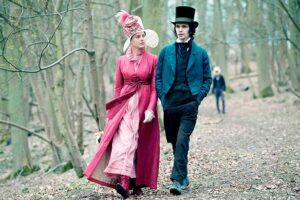
Therefore, paraphrasing the language of Jane Austen, it can be said that the film shows the special relationship between the “prudent” and the “romantic.” Campion, moreover, clearly refers to the works of the English writer, as well as film adaptations of her prose. The personality of the characters in “Bright Star” takes on additional meanings in the historical and moral context in which the action takes place. This is because the director’s vision clearly distances herself from the stereotypical image of the 19th century woman as a dreamy maiden devoid of her own ambitions. Campion emphasizes that even in a patriarchal culture oppressive to femininity, women have always been able to develop their own space and realize their desire for creativity.
A reflection on gender, or cultural gender, is also evident here. Fanny is a heroine who has the courage to defy the patterns of behavior imposed on her from above. Not only is she independent and wants to pursue herself creatively, but she is also able to fight for the feelings that are being born in her. Contrary to etiquette, she meets alone with her beloved and wants to marry him despite his difficult financial situation, which in the 19th century would have doomed her to a very difficult fate. It is worth noting the physicality of the main character, who presents herself unattractively, or at least is stripped of her typical erotic attributes. Thanks to this, the focus of the woman’s image is shifted from her beauty to her personality qualities. Keats falls in love with Fanny because of her interesting nature and intellectual qualities. He counts his beloved’s opinion on his own work and considers Fanny an equivalent partner.
The movie “Bright Star” – the butterfly metaphor
Nevertheless, the most significant thing in “Bright Star” remains love itself – in its first, purest, almost sacral shade. It is she, so to speak, who is the main character of the film – as beautiful and ephemeral as a butterfly, acting as the central metaphor of Jane Campion’s work. The image of the butterfly appears several times. First, it exists in the verbal realm as a beautiful, extremely lyrical excerpt from Keats’ letter to his beloved: “I almost wish we were butterflies and liv’d but three summer days — three such days with you I could fill with more delight than fifty common years could ever contain” – writes the infatuated John to Fanny.
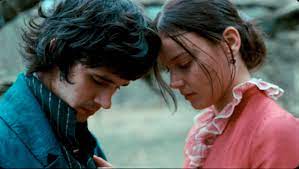
The blossoming of affection between the two young people is symbolized by the butterfly breeding that Fanny begins to carry out. The entire room of the dreamy girl drowns in colorful insects. In turn, the delivery of John’s letter about the breakup of the relationship coincides with the death of the butterflies. Therefore, the life cycle of these insects becomes a metaphorical image of the beauty and yet impermanent nature of love. In this simple procedure lies the strength of the message of Jane Campion’s movie. For it captivates the viewer with the freshness and authenticity of the characters, as well as the truth of the feeling emerging between them. For first love remains one of the most important human experiences. It is the one that initiates the process of spiritual maturation, and the memory of it lasts until the last days of life.
“Bright Star” – the myth of romantic love
Jane Campion draws on the myth of romantic love popularized in the early 19th century. The Romantics, following in the footsteps of Plato, were proponents of the theory of two halves of an orange, according to which loving souls formed a single entity in the hereafter, while on earth they are constantly searching for each other to reunite. However, even if they find each other, they cannot be together – for social conventions or death stand in the way of happiness. It is significant that the director does not depreciate the importance of this myth, but stresses that Romanticism still remains the key to European culture. This is because love suffering is a necessary stage in the inner development of the individual.
This can be seen in the evolution that the characters of “Bright Star” undergo, especially Fanny. From a young girl with a firm grasp of the earth, she transforms into a soulful woman capable of the highest sacrifices in the name of love. In turn, the bubbling John begins to think about acquiring finances to marry his beloved. Love causes the mutually alien worlds of the characters to begin to intermingle. Furthermore, the film clearly shows that the category of traditionally understood masculinity and femininity is sanctioned precisely in the love relationship.
It is love that causes the tenderness of femininity to awaken in Fanny, and the strength of masculinity in John. In this way, the 19th century story remains relevant to modern audiences, especially women. Although the modern woman must be strong and compete on an equal footing with a man to achieve success, the nature of love remains the same. For love means abandoning personal autonomy in favor of emotional dependence on another person. “When he doesn’t write, I feel I’m dying,” Fanny says to her mother. At other times she states: “Is it love? I will never mock it again.”
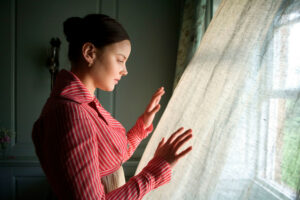
“Bright Star”: nature – culture
In “Bright Star”, affection, although confined by social conventions, belongs to the order of nature, as suggested in the film by the juxtaposition of the two spaces. The cramped and dark interiors of English houses sit side by side with the beauty of the open countryside. The rhythm of nature, moreover, reflects the stages of love infatuation. Spring and summer are the bloom of affection, autumn brings John’s breakdown and departure, while winter marks his death.
The picturesque scenes set in the summer, saturated with intense colors, are a mastery of cinematic language. John lying in the branches of flowering trees, searching for a nightingale’s nest or Fanny in a lavender meadow are true gems of the frame, composed using the painterly method. The characters in these scenes are completely fused with nature, symbolizing their absorption by the sphere of instinct and imagination. The gradual release from the prison of convention and the evolution of the characters towards what is most intimate and not subject to social control is also emphasized by the change in Fanny’s image. The girl’s stiff collars and elaborate hairstyle are changed for airy, light dresses and carelessly pinned hair.
“Bright Star” and the symbolism of the film image
It is impossible to ignore the role played in the movie “Bright Star” by the symbolism of individual details. In addition to the aforementioned butterfly, other elements in the film have a special significance highlighted by numerous repetitions. One of them is the needle, triggering not only associations with the aforementioned women’s work, but also set in the circle of erotic symbols. In this context, for example, analogies with the film “Girl with a Pearl Earring” come to mind. Eroticism itself, like death, does not appear on the screen directly, but they are introduced on an ellipsis. Other significant images are the window through which the characters look at each other, the wall separating their beds or the empty chair.
What, then, is Jane Campion’s work? “Bright Star” is a film that appeals to the viewer’s sensitivity and is deeply memorable. It has the delicacy of butterflies that live only three summer days.

